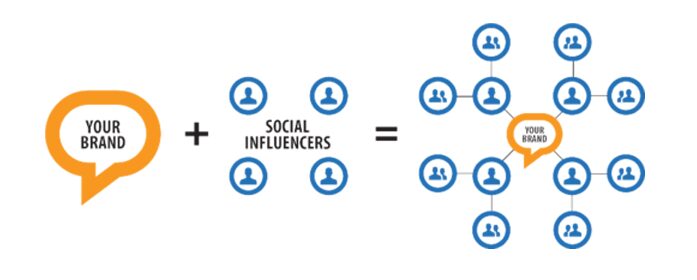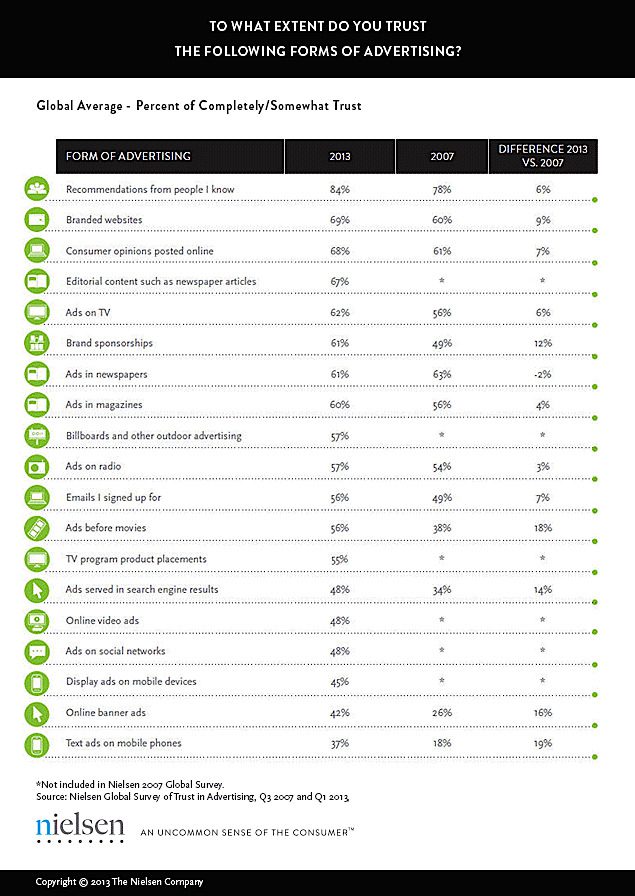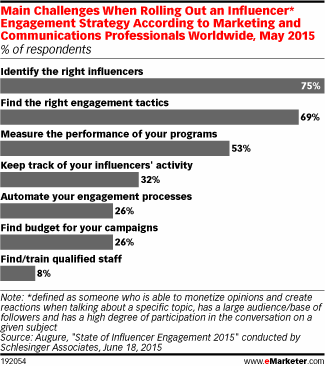You’re creating high quality content every day. You’re posting to Facebook, Twitter, and even LinkedIn. You’re emailing your small list of subscribers every time you publish.
But there’s still no traffic.
Growing a brand is tough. It can be such a discouraging experience that many marketers give up. We’ve experienced the same frustrations. We’ve agonized over flat analytics and celebrated double digit traffic numbers.
Growing an audience from the beginning is a bit of a catch-22, especially in a competitive niche where organic search engine traffic is tough to acquire. You need some fans who will share your content so you can capture more fans.
So how do you break into the scene?
By leveraging someone else’s audience.
What is Outreach Marketing?

Source: singlegrain.com
On her television show, Oprah Winfrey had a segment called “Oprah’s Book Club” that highlighted books she personally chose. Over the course of a month, she would read the book and discuss it with her fans.
Now, the Oprah show was enormously popular. (So popular, in fact, that Oprah went on to create her own cable TV network.) It lasted 25 years, received 47 Emmy Awards, and drew about 7.4 million views every day. As you can imagine, her recommendations had tremendous influence.
When Oprah recommended a book, it sold. Obscure titles became bestsellers overnight. Some were adapted into films and one even won a Pulitzer Prize (The Road, by the way; great book).
Naturally, every author whose work appealed to Oprah’s demographic wanted their book featured in her segment. It was guaranteed sales. Oprah’s team received hundreds of pitches every week. Most of the submitters never heard back, but over the course of the Book Club segment, 70 lucky authors were slingshot into stardom and revenue.
The tactic of reaching out to Oprah is called “outreach marketing” and it works the same way online.
Outreach marketing (sometimes called influencer marketing) is a simple strategy. It involves directly promoting your content to influential people whose audiences are similar to yours. The goal is to get the influencer to share your content with their fans, increasing your exposure to the right kinds of people.
This type of connection is more than standard promotion. It’s recommendation.
“People are wired to trust a third party recommendation more than someone talking about themselves. Whether it’s a guy at a cocktail party trying to promote himself for a date or a brand trying to convince a consumer that they are the best—it’s all the same,” says Kristen Matthews, Director of Marketing at GroupHigh.
Researchers at Nielsen found that people are more likely to trust advertising from people they know.

Source: nielsen.com
If you think that sounds a lot like public relations, you’re right. These days, there’s less of a distinction between a blog and a news outlet. Both publish facts and opinions, and both have audiences that can be leveraged. If you have any PR experience, outreach marketing will appeal to you.
Identifying Influential People
An influential person is someone with an audience that matches your own (or who you think your audience should be). They have a direct line to people who might become your fans too.
You don’t need a lot of influential people, just a few who are willing to work with you. New information from the USC Information Sciences Institute reveals that you only need a few influencers talking about your content to create an impression that everyone is interested. (This concept is known as the majority illusion.)
Now, finding influencers isn’t as easy as it sounds. 75% of marketers say identifying influencers is the hardest part of outreach marketing.

Source: emarketer.com
Your influencers have to meet a few conditions.
1. They have to be active.
If the influencer hasn’t blogged or tweeted in a year, their audience isn’t fresh. Even if they were willing to promote your content, their fans aren’t likely to follow their links.
2. They have to be relevant.
It’s possible to find an influencer that doesn’t relate to your topic, but still has a similar audience. For instance, let’s say your audience is men 18-25 who like reading sports news. A sports video game publisher might have the same audience, but he’s not likely to promote your sports news blog. The publisher has reach, but not influence.
3. They need an engaged audience.
You can’t measure engagement precisely, but you can get an idea. Look at the influencers recent social media and blog posts. Do they have likes, retweets, and comments? Is there back-and-forth conversation? Follower counts are irrelevant if no one cares what the influencer actually says.
4. They can’t be too big.
Naturally, you want the best return for your time, so you target the biggest influencers, right? Wrong. Working with influencers requires some reciprocity. If they don’t think you’ll be able to help them sometime soon, they ignore your email. It’s disheartening, but that’s the way of the world.
Instead, target the smaller influencers who would be more likely to share your content with their audience because they could use your help in return. As your audience expands, target your outreach to bigger influencers.
Use tools like Buzzsumo and Followerwonk to identify influencers. Follow every expert in your niche. Observe who the biggest players promote and go after those people. If you immerse yourself in your industry, you’ll quickly identify the movers and shakers.
Drop your influencers into a spreadsheet. Include their names, website URLs, email addresses, Twitter handles, and the number of Twitter followers they have (as a way to rank them in terms of value to you).
Building Relationships with Influential People
The best way to reach out to an influencer is by email. If that doesn’t work, make a connection with a tweet or direct message through some social media channel. If those methods aren’t effective, try again in a few months. Don’t pursue someone who doesn’t want to work with you.
Pitching influencers is a big topic that’s beyond the scope of this post. Brandbacker has a great article on it: How to Craft the Perfect Influencer Pitch. Essentially, a solid pitch requires a personalized message and a request to share your content in a way that communicates the value of the arrangement to the influencer.
Should you bribe influencers?
An outreach marketing strategy is about building relationships, not buying services or asking for favors. Be prepared to do something in return for the influencer. If your audience is substantially smaller than theirs, be prepared to do more for them than they will for you.
One time, while building contacts for a client, an influencer requested that I write an entire blog post about him and schedule 10 tweets over a month that linked to his popular articles. For all that, he would tweet about my content one time.
That seems like a lot of work for one tweet, but that tweet created thousands of pageviews for my client in the first month and a few thousand more over the next year. Plus, we got our foot in the door with a powerful influencer and worked together more in the future. Totally worth it.
Don’t add your influencers to your general email newsletter. They don’t want to receive your mass-mailed stuff. When you have something you would like them to share, email them individually. Make it personal. Explain why you think their followers would like your content.
Will some influencers ask for payment? Yep. In fact, that’s the business model of many online brands. For $25-$100, a cute Instagram girl will hold up your protein powder, wear your T-shirt, or tell her fans how much she learned from your online course.
Generally, I don’t recommend paying for links, tweets, or newsletter shout-outs. It’s a big web. Every niche has an influencer. You can find, pitch, and help one another for free.
Outreach and Content Marketing
Reach out to your list of influencers whenever you publish something they might like. It should become part of your content marketing process, just like writing, editing, and promoting your content on social media.
In the beginning, outreach will take some time as you build up a pool of influencers who don’t ignore your emails. You might have to send 50 or 100 emails until someone with any value responds. That’s to be expected. Don’t be discouraged if your emails aren’t answered immediately. Focus on relationships, not tweets, shares, or links.
Over time, as you foster those relationships, outreach becomes easier. Your influencers will value your relationship and share your content right away. Eventually, influential people will begin to seek you.
If you have any questions about outreach or content marketing, chat with us on Twitter.